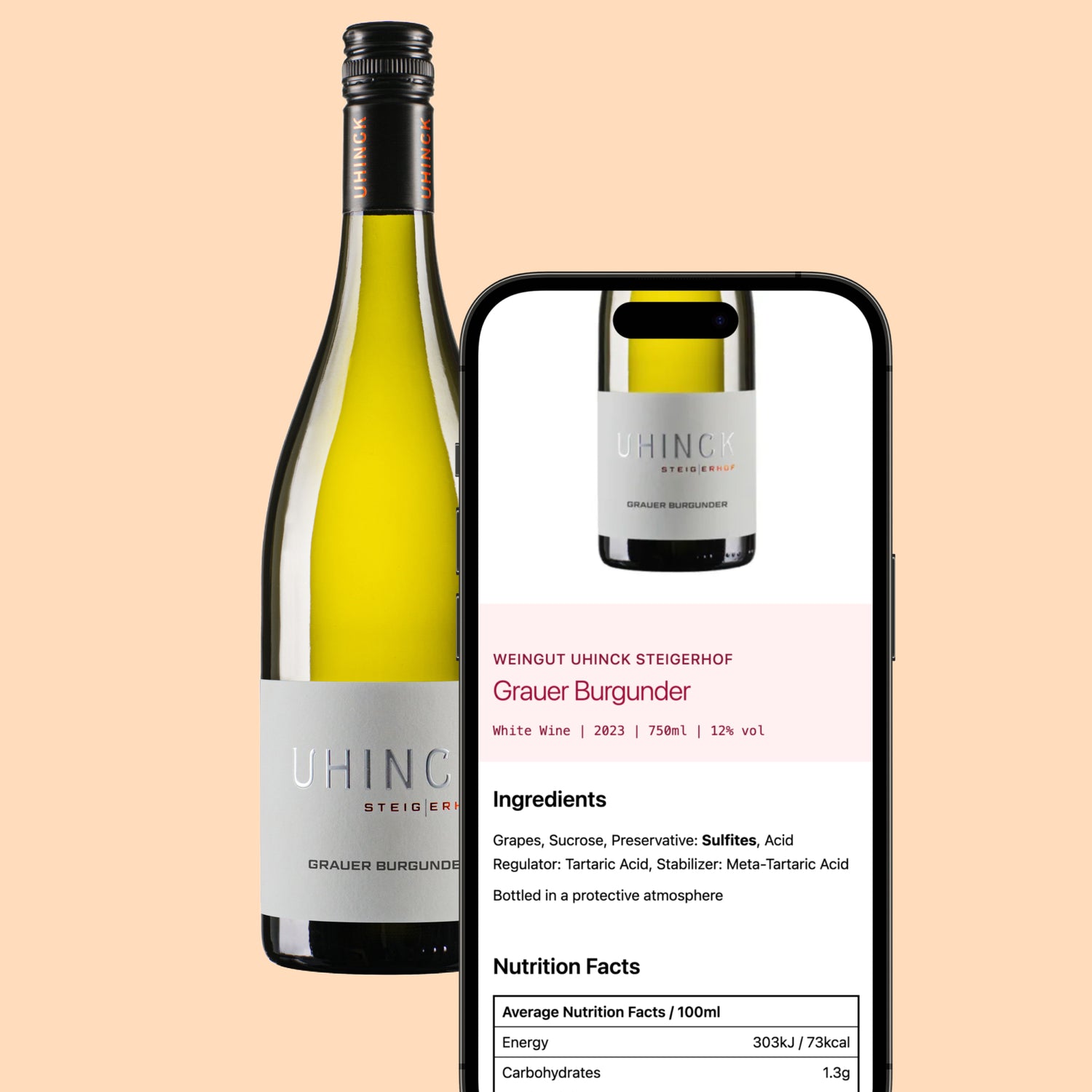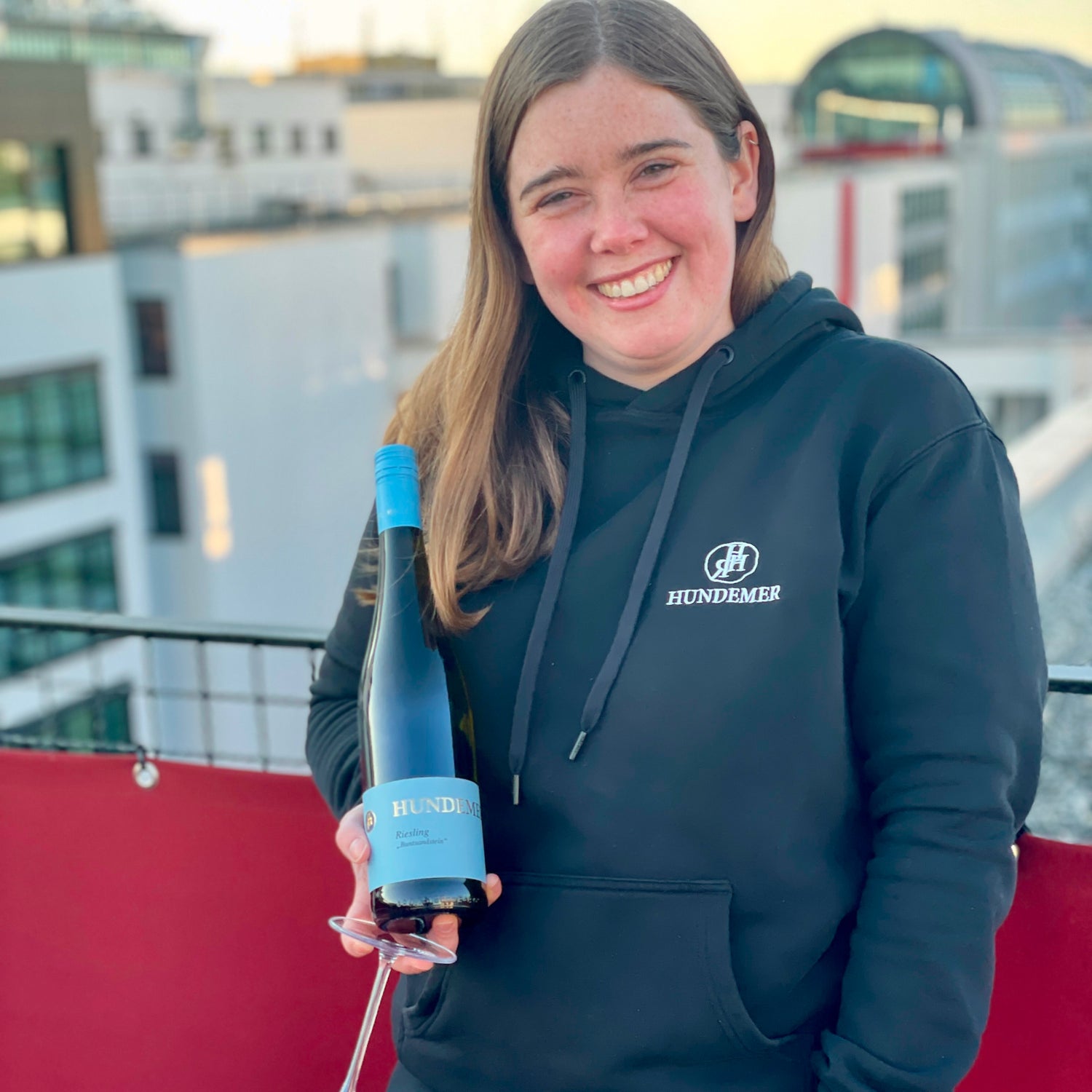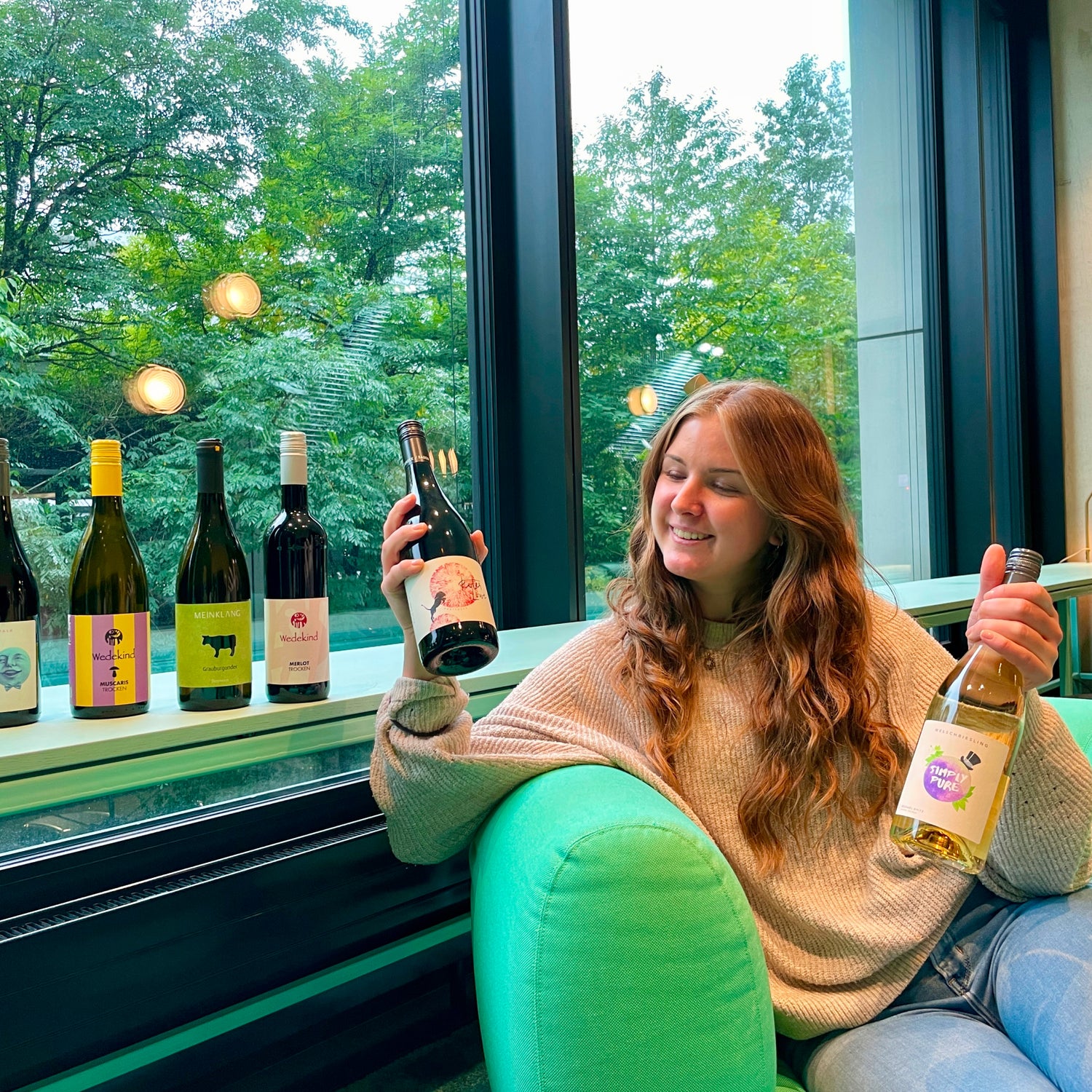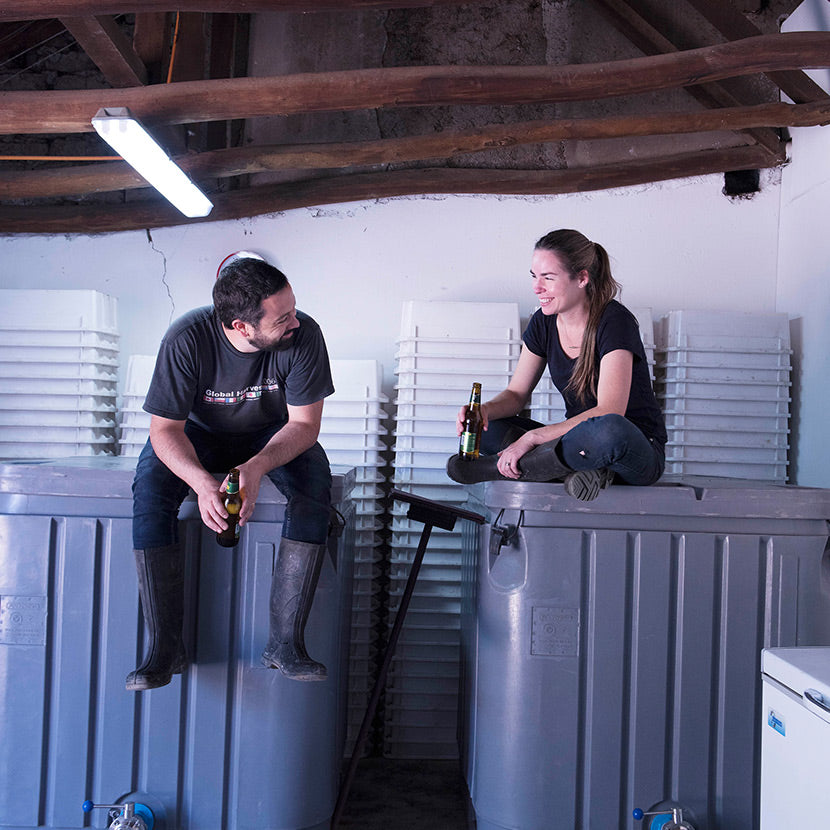
E-Labels For Your Wines
Empower informed choices with ingredient & nutritional transparency through E-Labels.
Leading Wineries From Across The Globe Trust AMOREVINO
You want to utilize E-Labels - but how?
You've heard about the EU regulation on wine labels. More transparency for consumers by making ingredients and nutritional values visible. That's great.
EU regulations require ingredient and nutritional information on wine labels. E-Labels, digital labels accessed through a QR-Code, offer an ergonomic solution. The benefits? Among others: (i) Information can be automatically displayed in the consumer's native language. (ii) The data can be updated at any time and adapted to evolving regulations. (iii) Through professional and compliant implementation, you build trust among consumers in your products, your brand, and integrity of your company.
However, along with the opportunities come new challenges. How do I stay informed about changes to EU regulations and ensure a quick adaptation? What happens if the QR-Code malfunctions or is misprinted? How can I support my retailers, restaurants and partners in implementing the regulations? What do I need to consider when selling in the winery's shop or online?
At AMOREVINO, we concern ourselves with E-Labels every day. We anticipate questions and develop the right solutions. We leverage our eight years of experience in the wine industry and our technical expertise to provide excellent advice and support to our customers. That's why we guide our customers from compiling the data, through testing the integration, to operational deployment on all channels.
If you have questions that concern you or want to know how we can support you, then schedule a discovery call with us now. We're looking forward to it!
Your Benefits with AMOREVINO

Weingut Hundemer, Hainfeld
Julia
"I've known AMOREVINO for several years now. Through our past collaborations, I've come to appreciate their deep understanding of sales strategies. With AMOREVINO, we aim to digitize the marketing of our wines and strengthen our collaboration with our retailers." - translated from German

Weingut Uhinck, Flörsheim-Dalsheim
Sophie
"AMOREVINO delivers exceptional service. From initial contact to solution implementation, our process has been seamless and pragmatic. Integration is straightforward, and pricing is attractive. With AMOREVINO, we save both time and costs." - translated from German

Weingut Schnell, Zotzenheim
Paula
"AMOREVINO deals with the EU regulations, stays up-to-date, and ensures that our winery meets all requirements. They continuously work on improving their platform and provide personalized support for our needs." - translated from German

Weingut Klaus Böhme, Laucha an der Unstrut
Luise
"After a personal consultation, I received QR codes with E-Labels from AMOREVINO quickly, which I easily printed on my labels. Their expertise and efficiency make them highly recommendable." translated from German

JP Martin, Coquimbo Wine Region
José Pablo
"AMOREVINO simplified a complex topic within a single Google Meet. Their solution is reliable and aesthetically pleasing, and their dedication to quality is remarkable."

Vitivinicola Carter Mollenhauer, Maule Valley
Edgard Carter & Karine Mollenhauer
"AMOREVINO provides outstanding support, transparent pricing, and a cost-effective solution. Their commitment to customer satisfaction sets them apart."

Tilman, your contact person
Get started with E-Labels now
Do you want to create E-labels for your wines? Schedule a personal discovery conversation with me. I'm Tilman, Managing Director at AMOREVINO, and I will help you with gaining clarity on EU regulations, guide you through our solution, and create a checklist with you for a successful implementation of E-Labels.
Email: team@amorevino.com | Phone: +49 89 541 966 69
Frequently Asked Questions
How long should E-Labels remain active?
The purpose of E-Labels is to enable consumers to make informed decisions by transparently providing information. Therefore, the E-Label of a wine should remain active for as long as consumers may need to make decisions regarding the wine, including both its purchase and consumption. E-Labels should continue to be accessible even after the winery has sold out the corresponding wine. This ensures that trading partners or consumers who store the wine for later consumption can still access the E-Label information, even if the winery no longer actively markets the wine.
The Commission outlined this period in the Questions and Answers document (C/2023/1190, Question 40), by stating that "(...)[E-Labels] should remain accessible in a way equivalent to the one of the information provided on a physical label, i.e., it should be available at least along the time period that specific category of wine product is expected to remain suitable for consumption in normal condition of storage(...)".
In essence, the E-Label should remain active until the end of the wine's storage potential.
With AMOREVINO, there is no limit to the duration of an E-label, and our pricing model does not cause additional costs for past vintages. You can keep your E-Labels active for as long as you wish.
Can I create E-Labels for beer as well?
We have specialized our E-Label solution for the wine industry; therefore, we have chosen not to support beer. Our E-Labels are suitable for wine and wine-like products such as fortified wine or brandy.
If you are looking for a solution tailored specifically for beer, please don't hesitate to email us at team@amorevino.com, and we will recommend one of our competent partners.
Can I easily switch to another solution provider in the future?
You have the flexibility to switch from AMOREVINO to another provider at any time. We assist you during the transition and ensure a seamless process. You can export all your data and redirect your existing QR-Codes to the E-Labels provided by your new provider. This redirection remains active for up to 20 years and is entirely free of charge.
What investments should I plan for E-Labels?
Determining the nutritional values and displaying the data in a nutritional table typically involves conducting a wine analysis by a laboratory. This analysis is commonly part of wine production and is carried out by wineries or winegrowers with their trusted laboratories. Most wine laboratories already include the determination of energy values (kJ/kcal) in their test results at no extra cost to their customers. Alternatively, energy values can be calculated based on information about alcohol, sugar, and acidity.
There are usually new costs associated with creating and providing E-Labels through a solution provider, which vary depending on the provider. At AMOREVINO's pricing focuses on delivering value to your winery. We aim to ensure that the added value of our E-Label solution, in terms of time savings, improved collaboration with partners, and transparency for consumers, justifies our prices.
At AMOREVINO, prices are calculated at the wine-item level. An active wine item in our software costs €0.50 per month plus VAT. A wine item can include unlimited vintages, batch numbers, and bottle formats. For each of these combinations, QR-Codes and their corresponding E-labels can be created at no additional cost. This means that if you introduce a new vintage and require new E-Labels, your costs will remain unchanged. There is no minimum number of active wine items; you only pay for the number of wine items you create.
Therefore, a winery marketing 10 wines would pay €5 per month plus VAT.
However, with 20 wines and more, we offer an unlimited plan for €10 per month plus VAT.
You can find more details about our pricing model here. If you have any questions, we are happy to schedule a personal introductory meeting. We are looking forward to it.
What requirements do my trading partners have regarding E-Labels?
According to EU Regulation 1169/2011, which addresses the provision of food information to consumers, specific guidelines are outlined for distance selling under Article 14 (1) a): "(...) [information must be] available before the purchase is concluded and shall appear on the material supporting the distance selling or be provided through other appropriate means clearly identified by the food business operator." Consequently, these regulations also extend to traders offering your wines, such as through an online shop or order catalog. By providing consumer information, you actively support your partners in compliance.
Moreover, there exists a fundamental need for comprehensive information among partners like retailers or restaurants, ensuring thorough consumer awareness. This includes providing details about allergens or voluntary labeling information regarding the wine. E-Labels and structured information presentation serve as practical channels for partners to access information.
With AMOREVINO, your partners can independently create and download their own QR-Codes, export information, or refer to your E-Labels through web widgets.
Can I migrate from an existing E-Labels solution to AMOREVINO?
In general, there should be no obstacles to switching from another solution provider to AMOREVINO. You have the following options:
1) Behind each QR-Code is a web address (URL). This URL either directly leads to or redirects to the E-Label. During migration, the existing E-Label information is transferred to AMOREVINO, with active support from our team. The URL of the QR-Code must now be adjusted to ensure consumers reach the new AMOREVINO E-Label. Typically, the domain operator of the QR-Code URL, usually the existing E-Label provider, implements this redirection. The redirection should remain active for as long as the E-label itself should be active, which means until the end of the wine's storage potential. It's possible that providers may charge a fee for redirection.
2) Alternatively, the existing E-Labels remain with the current solution provider, and new E-Labels are created with AMOREVINO. In this case, it's essential to confirm with the current provider that the existing E-Labels remain active, even if no new E-Labels are created. Depending on the pricing model of the current provider, a fee may be charged for active E-Labels.
In both cases, there is the possibility that AMOREVINO will cover the remaining costs after the switch. Please feel free to email us at team@amorevino.com regarding this, and we will discuss your specific situation.
I produce my wines outside the EU. Do I still require E-Labels?
According to the Questions and Answers document (C/2023/1190, Question 5) from the Commission, the following specification is made: "All domestic or imported wines placed on the EU market after 8 December 2023 must, in principle, meet the new labelling requirements.".
Hence, E-Labels serve as a viable solution for wines not produced within the EU but distributed in the EU, ensuring compliance with wine labeling regulations.
Our conversations with wineries from the USA indicate significant interest in the E-Labels solution. Active adaptation streamlines collaboration with trading partners and builds consumer trust through transparency.
The AMOREVINO E-Label solution is applicable for producers and marketers worldwide to comply with evolving regulations and deliver transparency to consumers in the EU and other markets.
E-Labels: A Digital Solution for Transparent Food Labeling
E-Labels are a digital solution that provides consumers with transparent information about food labeling, helping them to make better and more informed decisions. E-Labels, especially for wine, are still in the early stages of practical use.
A possible application scenario is as follows:
- Winemakers add food information about their products, especially ingredients and nutritional values, on an E-Labels platform.
- A QR-Code is then created, which, when scanned, redirects to the web address of the E-Label.
- The QR-Code is integrated into the physical wine label, printed and attached to the wine bottle.
- The wine is introduced to the market and offered for purchase to consumers through various channels.
- Before purchasing a wine, consumers can scan the QR-Code with their smartphone and retrieve the food information from the E-Label.
- The information is displayed in the consumer's national language to improve understanding of the information and facilitate decision-making.
- Consumers can also retrieve the information from the E-Label at a later date after purchase, in order to make decisions about consumption even after the wine has been stored.
The use of E-Labels should always be considered holistically with the physical product and the sales channel. Certain information must still be available on the wine label or made available through the channel, even if E-Labels are used. For example, in the case of online shops, where consumers do not have the physical product in hand before purchase, the same information needs to be provided in order to make an informed decision.
The guidelines and regulations that define and influence the use of E-Labels are compiled from various documents published by the EU. These include:
- EU Regulation No 1169/2011, also known as the Food Information to Consumers (FIC) Regulation, of 25 October 2011, provides the basis for the provision of food information to consumers in the EU. Consumers should be enabled to make informed decisions. It covers elements such as ingredients, allergens and nutrition declaration.
- EU Regulation No 1308/2013 of 17 December 2013 on the common market organization (CMO) for agricultural products, describes the labeling and presentation of wine. Section 3 and Annex VII list information and expressions that convey information to consumers.
- EU Regulation No 251/2014 of 26 February 2014 ensures that aromatized wine is defined, produced and labeled in a uniform manner. This mainly deals with fair competition, but also aims to provide consumers with more transparency through clear labeling, especially with regard to traditional production.
- EU Regulation 2021/2117 of 2 December 2021 is the most important document in regards to E-Labels. The regulation is also known as the Wine Labeling Regulation, although it covers other areas as well. It adapts and integrates essential elements from EU Regulation No 1151/2012 and makes changes to EU Regulation No 1308/2013 and EU Regulation No 251/2014. Relevant for E-Labels is that "[the full nutrition declaration and the list of ingredients shall] be provided by electronic means identified on the package or on a label attached thereto.".
- EU Delegated Regulation 2023/1606 of 30 May 2023 amends the existing EU Regulation 2019/33 to the changes introduced by EU Regulation 2021/2117. Of particular relevance is the consideration of the new mandatory information for wine, in particular the nutrition labeling and the list of ingredients.
- Notice C/2023/1190 serves to clarify and specify the already existing EU Regulation 2021/2117. This document is particularly helpful for the implementation of E-Labels. Among other things, it also describes the solution approach using QR-Codes.
In addition to a precise and detailed implementation of the rules in our E-Labels solution, we also support our customers with summaries, guides and checklists to comply with the new rules and provide consumers with comprehensive information. As with all innovations in market practices, E-Labels will also provide new insights and experience through practical use. This may lead to the creation of new rules, the amendment of existing rules or the repeal of existing rules. Furthermore, there is the possibility that the successful use of E-Labels will lead to an expansion of the information purpose and that further consumer information will be included in E-Labels. This is also the case for the possible use of environmental labeling of packaging, as already seen in Italy through the implementation of EU Directive 2018/852 in the form of the CONAI guidelines. AMOREVINO closely monitors these developments and can respond to and implement changes.
Fundamentally, the intention of innovations is always our priority: providing more transparency to consumers to enable better decisions. Therefore, we do not simply implement the rules and regulations but also consider how our software can offer our customers the opportunity to meet consumer information needs beyond the minimum requirement.
Reach out now and get started with EU compliant E-Labels for your wine and provide digital access to ingredients and nutritional facts to empower informed decisions for consumers.





